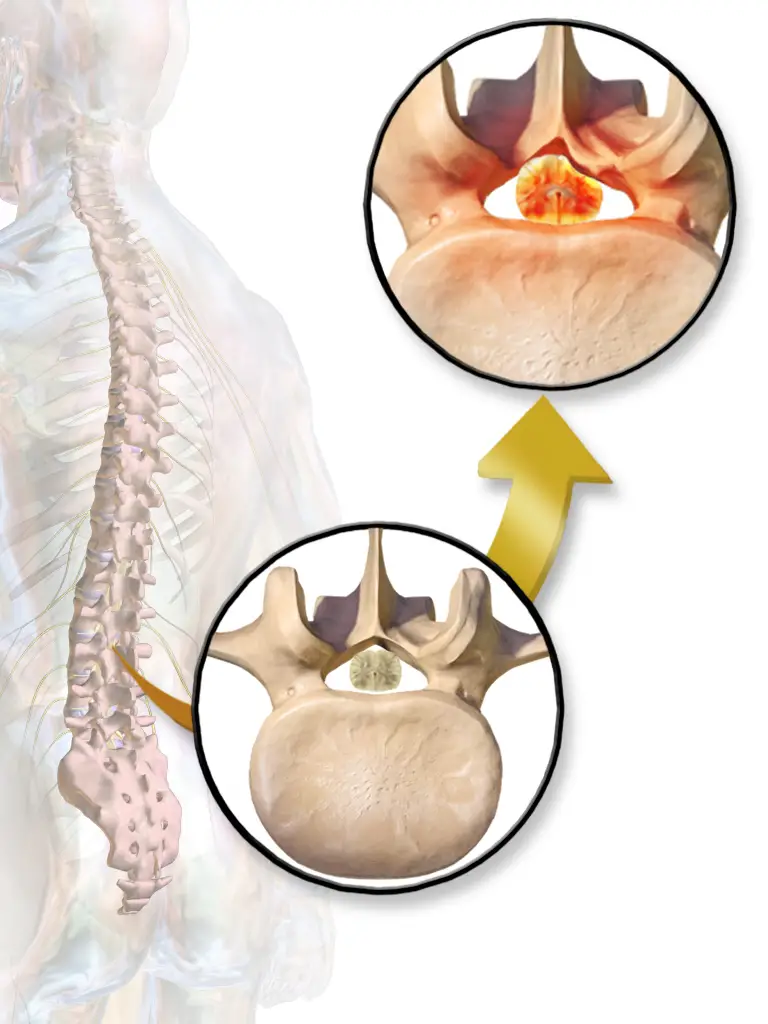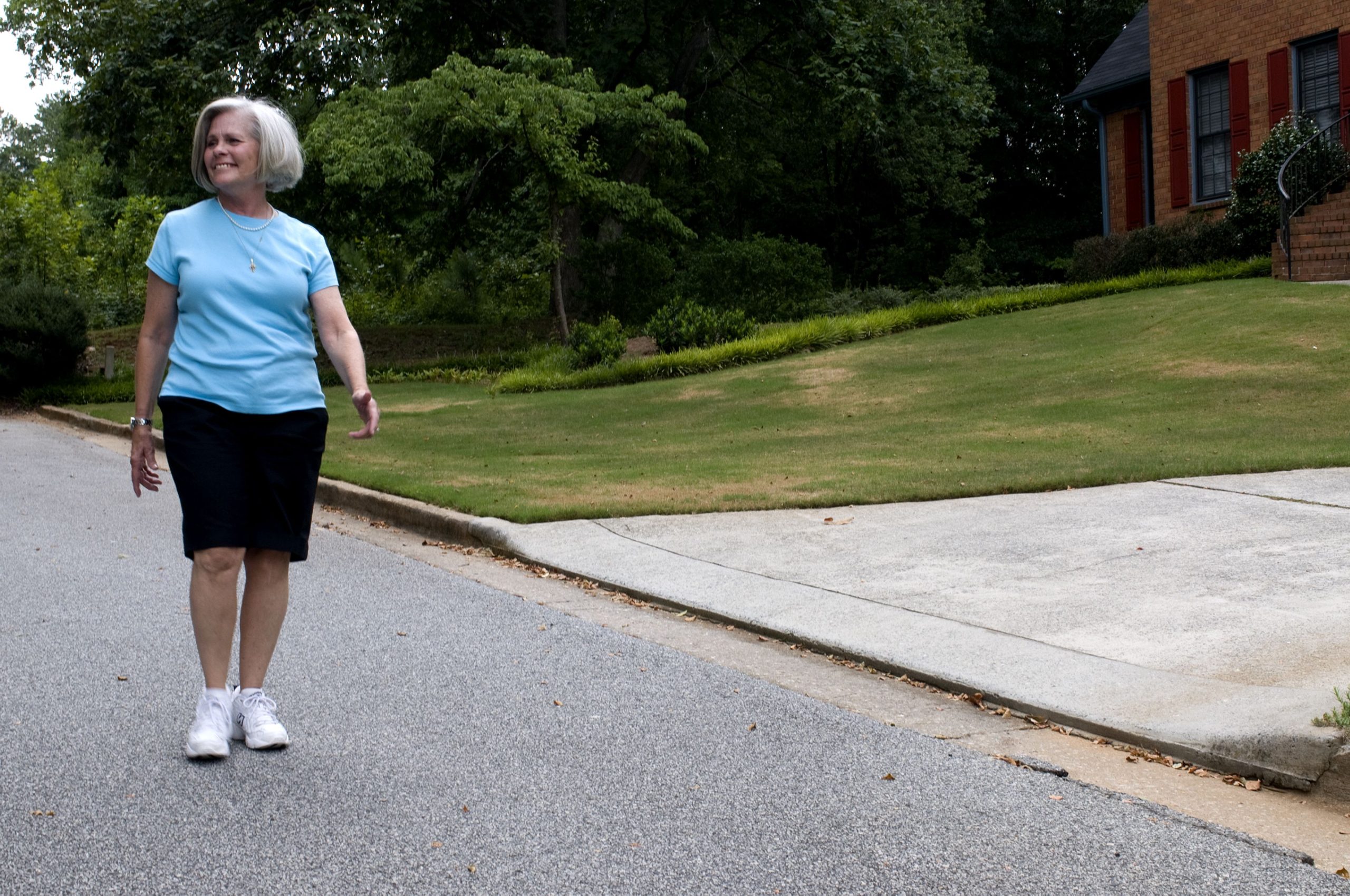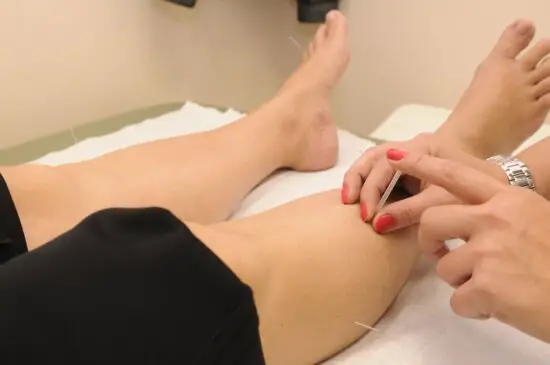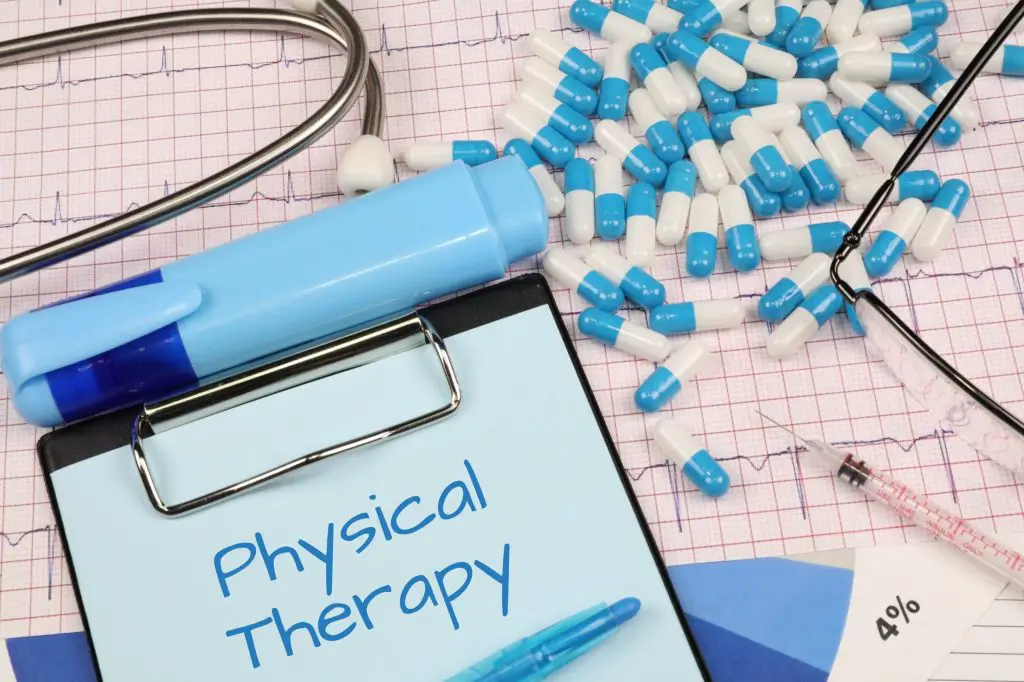If you’re suffering from spinal stenosis, you’re probably wondering what the latest treatment options are. Unfortunately, there is no one-size-fits-all answer to this question. However, we can provide you with some general information about the various treatment options that are available.
Contents
Spinal Stenosis in the Low Back
The spinal canal is the space within the vertebrae through which the spinal cord runs. Spinal stenosis is a condition in which the spinal canal narrows, putting pressure on the spinal cord and nerve roots. This can cause pain, tingling, numbness, or weakness in the legs, back, neck, or arms.

Spinal stenosis is usually caused by degenerative changes in the spine, such as wear and tear from aging or arthritis. It can also be caused by trauma, tumors, or congenital abnormalities. Symptoms of spinal stenosis usually develop slowly over time. They may get worse with activity and improve with rest.
There are several treatment options for spinal stenosis. These include surgery, medications, physical therapy, and exercise. The goal of treatment is to relieve symptoms and improve quality of life. Surgery is usually only recommended when other treatments have failed to provide relief. The type of surgery will depend on the location and severity of the stenosis.
Spinal stenosis is a common condition that causes pain and other symptoms due to pressure on the spinal cord or nerve roots. There are several treatment options available, and surgery is usually only recommended when other treatments have failed to provide relief.
Spinal Stenosis in the Neck
Spinal stenosis is a condition that causes the narrowing of the spinal canal. This can put pressure on the spinal cord and nerves and can cause pain, numbness, and weakness in the arms and legs. Spinal stenosis most often occurs in people over the age of 50 and is more common in women than men.
There are two types of spinal stenosis: cervical (in the neck) and lumbar (in the lower back). The most common type is lumbar stenosis, which affects about 80% of people with this condition. Cervical stenosis is much less common, but it can be more serious because it can lead to paralysis.
The main treatment for spinal stenosis is physical therapy. A physical therapist can teach you exercises to help relieve your pain and improve your mobility. If physical therapy doesn’t help, you may need to have surgery to widen the spinal canal or relieve pressure on the nerves. In some cases, a spinal fusion may be necessary to stabilize the spine.
The latest treatment for cervical spinal stenosis is the Vertiflex Superion system. This is a minimally invasive procedure that helps relieve pressure on the nerve roots by holding them in place with a stent-like device. The Superion system has been shown to be effective in relieving pain and improving function in people with this condition.
Spinal Stenosis Treatment Without Surgery
The latest treatment for spinal stenosis is a nonsurgical approach that uses special injections to relieve pain. Spinal stenosis is a condition in which the spinal canal narrows, putting pressure on the spinal cord and nerves. This can cause pain, numbness, and weakness in the legs and back.
Traditionally, spinal stenosis has been treated with surgery to widen the spinal canal. However, this approach carries risks such as infection, bleeding, and damage to the nerve roots. Injections provide a less invasive option with fewer side effects.
The injections used to treat spinal stenosis are called epidural steroid injections (ESIs). They are given into the epidural space, which is the area around the spinal cord. The steroids help reduce inflammation and pain. ESIs are usually given in a series of three injections over a period of weeks or months.
If you are considering treatment for your spinal stenosis, talk to your healthcare provider about all of your options, including nonsurgical treatments like epidural steroid injections.
New Treatment for Patients with Spinal Stenosis – Inversion Therapy
Spinal stenosis is a condition in which the spine narrows and puts pressure on the spinal cord and nerves. This can lead to pain, numbness, and weakness in the legs and back. Spinal stenosis can be caused by aging, arthritis, or other spine disorders.
In the past, the only treatment options for spinal stenosis were surgery or physical therapy. However, there is a new treatment option that is proving to be very effective for patients with this condition – inversion therapy.
Inversion therapy is a type of treatment that uses gravity to decompress the spine and take pressure off of the nerves. It is typically done using an inversion table or other type of device that allows the patient to be suspended upside down.
Studies have shown that inversion therapy can be very effective at relieving symptoms of spinal stenosis and providing long-term relief from back pain. In addition, it is a non-invasive treatment option that does not require surgery or medication. If you suffer from spinal stenosis, talk to your doctor about whether inversion therapy could be right for you.
Is Walking Good for Spinal Stenosis?
Walking is good exercise for people with spinal stenosis because it takes the pressure off the spine. People with herniated disks or other back problems should check with their doctor before starting an exercise program.

Spinal stenosis is a condition in which the space around the spinal cord narrows. This can happen due to wear and tear on the vertebrae, or it can be caused by a herniated disk, tumor, or injury. Spinal stenosis can lead to back pain, weakness, and numbness in the legs. In severe cases, it can cause paralysis.
There is no cure for spinal stenosis, but there are treatments that can help relieve the symptoms. These include physical therapy, chiropractic care, acupuncture, and massage. Surgery is an option for some people with severe symptoms. The most common type of surgery for spinal stenosis is a laminectomy, which involves removing part of the vertebrae to widen the space around the spinal cord. Other surgeries include spinal fusions and laminoplasty.
Stretches for Spinal Stenosis
The National Institute of Arthritis and Musculoskeletal and Skin Diseases (NIAMS) estimates that approximately 2.4 million Americans suffer from spinal stenosis. This results when the spinal canal narrows and puts pressure on the nerve roots and/or the spinal cord itself. This can cause pain, numbness, cramping, or weakness in the legs, back, or neck. In some people, the symptoms are so mild they go unnoticed. In others, the discomfort is so severe it interferes with their ability to walk or even stand.

There are a number of different treatments for spinal stenosis, both surgical and nonsurgical. Many people find relief with simple measures such as over-the-counter pain medications, stretching exercises, and losing weight if they are overweight. Others may need more aggressive treatment, such as steroid injections or surgery.
If you have spinal stenosis, talk to your doctor about the best treatment options for you.
Acupuncture for Spinal Stenosis
A new study shows that acupuncture can provide significant relief for the pain and other symptoms of spinal stenosis, a condition that affects more than two million Americans. The study, which was conducted by researchers at the University of Rochester Medical Center, is the first to assess the use of acupuncture as a standalone therapy for spinal stenosis.
Spinal stenosis is a condition in which the spaces within the spine narrow, causing pressure on the spinal cord and nerves. This can lead to pain, numbness, weakness, and other neurological symptoms. In severe cases, it can make it difficult to walk or stand for long periods of time.

The new study included 100 patients with spinal stenosis who were divided into two groups. One group received acupuncture treatments twice a week for six weeks, while the other group received no treatment. The researchers found that those who received acupuncture experienced significant improvements in pain, physical function, and quality of life when compared to those who did not receive treatment. Additionally, the improvements in pain and function were still evident six months after the completion of treatment.
While Western medicine has yet to fully explain how acupuncture works, it is thought to stimulate the body’s natural healing response by activating energy lines (known as meridians) and releasing neurotransmitters that block pain signals from reaching the brain. acupuncture has been used to treat a variety of conditions for centuries, but only recently has it begun to gain acceptance among mainstream medical practitioners.
The new study provides strong evidence that acupuncture can provide significant relief for people with spinal stenosis and should be considered an effective treatment option by both medical doctors and patients.
Physical Therapy for Spinal Stenosis
When physical therapy is recommended for spinal stenosis, it is often because other lifestyle factors are also contributing to the condition — such as obesity, lack of exercise, and poor posture. People with these health conditions can benefit from physical therapy, but they may not see the biggest improvements.
Those who are considered overweight or obese may need to slim down before they can see any positive effects from physical therapy. Losing weight can be difficult, but it is often essential for people with spinal stenosis. A physical therapist can help design a safe and effective weight-loss plan.

Exercise is often recommended as part of a physical therapy program for spinal stenosis. While some people may be able to do hearted stretches and other exercises on their own, others may need the structure and supervision that a physical therapist can provide. group classes may also be an option. The goal is to help people build up their strength so they can better support their spine and manage their symptoms.
It’s important to remember that not all treatments for spinal stenosis will work for everyone. What works for one person may not work for another. That’s why it’s important to talk to your doctor or physical therapist about what treatment options are right for you.
Injections for Spinal Stenosis
Injections for spinal stenosis are a type of nonsurgical treatment used to relieve pain caused by this condition. They’re usually only recommended when other treatments, such as physical therapy, haven’t worked.
There are different types of injections that can be used to treat spinal stenosis. Epidural steroid injections (ESIs) are the most common. They’re typically given in a series of three injections, with each injection being given about three weeks apart.
ESIs have been found to provide short-term pain relief for some people with spinal stenosis. However, there isn’t much research on their long-term benefits. It’s not known if they provide the same benefits as surgery, which is the only treatment that has been shown to provide long-term pain relief for people with this condition.
Many people with spinal stenosis find injections to be helpful in managing their pain levels. For some people, they’re the only treatment they need. For others, they’re a part of a larger treatment plan that may also include physical therapy and other nonsurgical treatments.
Side effects are uncommon but can include headaches, nausea, and dizziness. In rare cases, more serious side effects can occur, such as nerve damage or paralysis. This is why it’s important to only have injections done by a qualified healthcare provider who has experience treating this condition.
Spinal stenosis is a condition that can be very painful and debilitating. It’s important to talk to your doctor about all of your treatment options before deciding on a course of action. Injections may provide some relief for some people, but they may not be the best option for everyone.
Frequently Asked Questions
How dangerous is spinal stenosis?
The degree of symptoms and disability caused by spinal stenosis varies widely. In some people, it causes no symptoms and no disability. In others, it can cause severe pain and disability.
How to treat spinal stenosis naturally?
There is no one-size-fits-all answer to this question, as the best way to treat spinal stenosis naturally will vary depending on the individual's specific condition. However, some general treatments that may be effective for spinal stenosis include physical therapy, exercise, and stretching. Additionally, some people may find relief from spinal stenosis by using alternative therapies such as acupuncture or massage.
What are the best exercises for stenosis?
The best exercises for stenosis are those that help to improve flexibility and range of motion in the affected area. Stretching exercises and yoga poses that target the spine can be particularly helpful.
stenosis, pain, spine, surgery, treatment, symptoms, patients, treatments, health, procedure, therapy, nerve, doctor, nerves, space, bone, cord, relief, canal, people, back, medications, pressure, lumbar, exercise, care, time, fusion, condition, vertebrae, injections, neck, exercises, bones, options, surgeon, laminectomy, system, decompression, cases, spinal stenosis, spinal canal, spinal cord, physical therapy, spinal fusion, nerve roots, spinal stenosis pain, spinal column, spinal stenosis treatment, physical therapist, back pain, spine surgery, vertiflex superion, spinal stenosis symptoms, pain relief, spinal surgery, spinal stenosis surgery, healthcare provider, lumbar spine, spinal bone, spinal stenosis patients, severe cases, surgical treatment, bone spurs, spinal nerves, metal hardware, alternative therapies, treatment options, spinal stenosis treatments, side effects
Conclusion
The findings of this study showed that inversion tables are a promising new treatment for spinal stenosis. In terms of safety and efficacy, inversion therapy appears to be comparable to other surgical treatments for spinal stenosis. In addition, inversion therapy is associated with fewer complications and side effects than other surgical treatments. Therefore, inversion therapy should be considered as a treatment option for patients with spinal stenosis.
Teeter® Inversion Tables are the ONLY registered with the FDA as a 510(k) medical device. The Teeter is indicated for back pain, muscle tension, spasm, herniated disc, sciatica, degenerative disc disease, spinal stenosis, spinal curvature due to tight muscles, and facet syndrome.

Alan Walker is an author, researcher, and contributing writer at Spine Institute NY. He is a typical introvert, coffee fanatic, and freelancer.”

